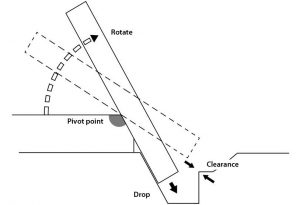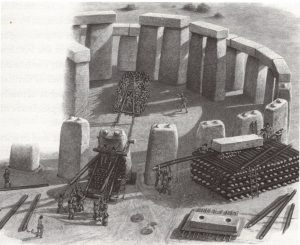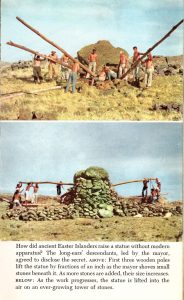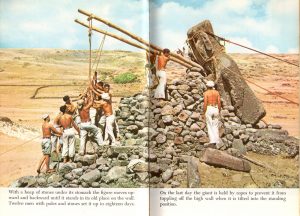Stonehenge in England is situated near Salisbury, Wiltshire about fifty miles southwest of London. No, I have not visited this Stonehenge, unfortunately. These ancient ruins represent the most celebrated of the megalithic monuments of England. In this article I will discuss what Stonehenge consists of, who built it, when it was built, and how it was built. My descriptions and conclusions will be motivated by the presuppositions of a biblical creationist worldview. [Read Stonehenge- Part 1.]
- What:
The stones at the monument are surrounded by a circular ditch 340 feet in diameter by five feet deep, within which is a bank and a ring of 56 pits known as Aubrey holes after their discoverer, the British antiquary John Aubrey. The alignment and layout is in Figure 1 below. Notice that the stones are in a general alignment to the midsummer and midwinter solstices.
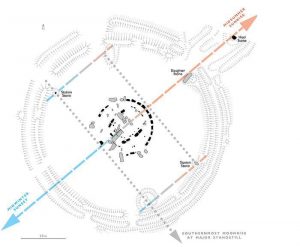 Figure 1. Stonehenge alignment and sarsen stone layout.
Figure 1. Stonehenge alignment and sarsen stone layout.
On the northeast there is a break in the ditch which affords a ditch-bordered avenue by 75 feet wide that extends generally northeastward for about two miles. The monument itself consists of four concentric ranges of stones, the outermost range is a circle, 100 feet in diameter, of large, lintel-covered, silicified sandstone blocks called sarsen stones. Within this circle is a circle of smaller stones called bluestones. The bluestone circle encloses a horseshoe-shaped arrangement of five lintelled pairs of huge sarsen stones. These stones in the horseshoe-shaped arrangement are called the trilithons. There are some additional bluestones arranged inside the trilithons as well as a large sandstone block called the altar stone. The sarsen stone layout is shown in figure 2 below. Please note the key at the lower left that identifies which of the sarsen stones are standing, which are fallen, and which are missing.
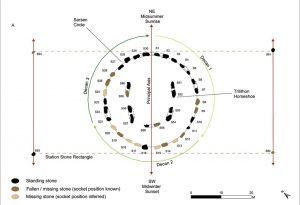 Figure 2. Sarsen stone layout at Stonehenge.
Figure 2. Sarsen stone layout at Stonehenge.
There are also four stone locations situated outside of the rings that are called station stones as can be seen in the figure. Not shown in figure 2 are two other large stones, one called the heel stone and the other the slaughter stone. They can be seen in figure 1. The heel stone is about 200 feet from the edge of the sarsen stone circle with the slaughter stone located mid-way between. The stones are of varying shapes and thicknesses, but clearly all the sarsen stones have been worked to a certain extent. England’s Stonehenge was accurately constructed and arranged, but the stones are not at all uniform like the Maryhill Stonehenge concrete “stones” that I described in Part 1.
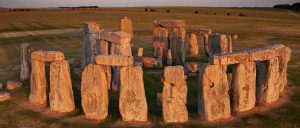 Figure 3. Stonehenge aerial view.
Figure 3. Stonehenge aerial view.
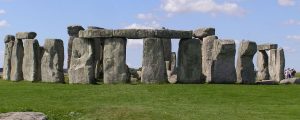 Figure 4. Stonehenge from the northeast. Slaughter stone at lower left.
Figure 4. Stonehenge from the northeast. Slaughter stone at lower left.
There are many mysterious and amazing facts about the ruins at Stonehenge. Among the most amazing is that the bluestone quarries were located in the Preseli Hills of Wales 150 miles west of Stonehenge! The bluestone weights are estimated at from 1000 pounds each up to 3½ tons each. The sarsen stones quarry was “only” 20 miles north of Stonehenge at Marlborough Downs. But the sarsen stones weigh an average of over 20 tons each for the circle uprights, 33 tons each for the trilithon uprights, 5 ½ tons each for the circle lintels, and 15 tons each the trilithon lintels. The circle uprights are 12-14 feet high and the trilithon uprights are 16-22 feet high. The Bluestones are nine feet tall or shorter.
 Figure 5. Possible routes for stone transportation to Stonehenge.
Figure 5. Possible routes for stone transportation to Stonehenge.
Another mystery is what was the purpose of Stonehenge? Since the builders and historians of the ancient past left no written records of what happened over the centuries no one can really know for sure the historical details. Many experts believe that Stonehenge was an astronomical observatory or calendar that would help with various religious events and crop plantings. It is also possible that the planets and stars were worshipped there, and using biblical presuppositions we could assume that the people could have been using Stonehenge to worship the “host of heaven” as a mark of their continuing rebellion against God. Recent archaeological investigations at the site have concluded that Stonehenge was modified over the centuries by different people groups possibly for different uses. They believe that Stonehenge was not just a single construction project that was static for thousands of years until it was vandalized and/or reconfigured before and at the time of the Romans. More on its history in section 4 that follows.
- Where:
 Figure 6. Google Map showing Stonehenge, London and environs.
Figure 6. Google Map showing Stonehenge, London and environs.
- & 4. Who & When:
Secular investigators consistently have used radiocarbon dating to date Stonehenge. Some estimates date the founding to be as much as 10,000 years ago. We know that cannot be correct since Stonehenge has to have been constructed sometime after the global Flood (c. 2,500 BC) and the dispersion from the tower of Babel that is biblically stated to have occurred about 2,250 BC. Since secularists do not take into account the effects of the global Flood in their interpretations of radiocarbon dating, they always have greater than actual estimates for the time back in history that the dated events took place. (There are a number of creationist answer books and website articles that explain this in great scientific detail.)
One recent secular radiocarbon dating scheme illustrates this discrepancy as follows:Stage 1: BLUEHENGE (cremation burial period) 3,200 BC to 3,000 BC. Secular Neolithic age. This assumes that the bluestones were constructed first, the heel stone was natural, and some of the pits were constructed. The site was used for cremation burial. People only had use of stone tools.
Stage 2: STONEHENGE 2,200 to 2,500 BC. Secular Copper & Bronze Ages. Sarsen stone circle built along with the trilithons and the slaughter stone. Various re-arrangements of the bluestones are made.
So, the secular radiocarbon dating looks to be off by (3,200 + 2000) – (2,250 + 2000) years = 950 years, or off by about 20%. These are just ballpark figures but do allow a way for people to correlate secular radiocarbon dates to biblical dates for the times since the Flood.
We can conclude that so far as the areas around where Stonehenge is located the people group that settled there had lost the ability to use metal tools due to the confusion at Babel. They were initially only able to use stone tools. Eventually they regained copper and bronze tool making technology undoubtedly by the introduction of trade with other groups. There is no indication that any of the people who were involved in the layout and construction of the monument were stupid brutes. They were all very intelligent people a conclusion that matches up with the findings all around the world for ancient peoples. Next we will consider how they were able to transfer the heavy stones and erect the uprights and the lintels some thousands of years ago.
- How:
First of all, I am not privy to the various mysterious techniques of the ancients that some have proposed for the construction of ancient monolithic monuments and stone works. By this I mean I do not have any knowledge of levitation, electrogravitics, and other fantastic suggested methods of the ancients. I know nothing about how the B-2 bomber works. In this article I will only consider how Stonehenge could have been built using what might be called Stone Age techniques. That also does not mean that I am proposing that the engineering techniques that might have worked at Stonehenge would have been sufficient for constructing all of the huge stone ruins around the world (such as the pyramid at Giza, for example).
Let us consider how they moved the heavy stones over large distances on land. It has been often suggested that rollers were placed under a sledge carrying a stone and a large crew pushed and pulled the sledge. Illustrations often show these log rollers going over rough terrain. I know from my days of moving heavy machinery in machine shops that this is not likely what they used. If one has a perfectly flat concrete slab and an attempt is made to move a heavy item on rollers it can be done, but there are all kinds of difficulties that can result. The rollers will not stay together unless they are exactly the same diameter. If the rollers are too small compared to the load it is difficult to roll them. The rollers must have enough strength to support the load. I cannot envision log rollers over the ground ever working to move monolithic stones. The logs would sink, not roll.
One thing that might work is a wheeled cart rolling on parallel log rails. But that is called a railroad and requires precise alignment and leveling. There would be a need for bridges and long curved rail units. There would be massive stone rail support remains along the routes of such huge construction projects still visible today. I would conclude that an ancient railroad was not feasible for Stonehenge.
What is feasible is what has been used in recent times by people with similar means to what we might think the Stonehenge builders had. In Figure 7 is a 1915 photo of a group of Indonesian natives moving a large stone on a bed of logs. Note that the logs are not rollers and are kept from rolling by vertical stakes. The sledge is pushed and pulled by the men and slides over the skid road of logs.
 Figure 7. Sledge with monolith in Indonesia 1915.
Figure 7. Sledge with monolith in Indonesia 1915.
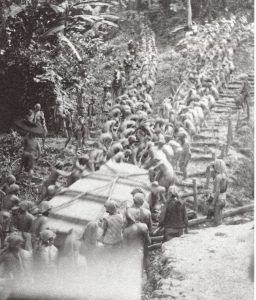 Figure 8. Indonesian workers pull the monolith toward its destination.
Figure 8. Indonesian workers pull the monolith toward its destination.
In Figure 8 the army of workers labor to pull the sledge up a hill toward its destination. The sledge had to have been built strong enough to withstand the forces of gravity and the pull. I submit that the large Stonehenge stones could have been transported over land by a method similar to that shown in Figures 7 and 8. That means that all of the sarsen stones would have been dragged to the site over the 20 miles in that manner. The lighter and smaller bluestones might have been dragged in a similar manner, but I think it would make more sense that they were transported by water in some way considering how far away they were quarried. Researchers are being continuously amazed by the water craft size and capability of the ancients. No matter the method it would have taken a large group of men and likely various support stations along the way for feeding and resting the workers. Perhaps the workers were recruited along the way from various settlements.
One thing we can assume with a high likelihood of truth is that these people were very committed in order to attempt and complete a project like transporting the stones to Stonehenge! Next, how did they erect the large monolithic stones?
I think the process started with the layout of the sarsen stones. That means they had more than a rudimentary grasp of surveying. When they were ready to erect one of the upright stones they would need to dig the hole for it. The sarsens are all held in place by holes wedged with soil and pieces of rock. This would be like installing a fence post. Tools made of deer antlers have been found on site so that may be how they dug the holes. After the upright stones are in place, then the lintels would be lifted up on top. It seems obvious that since the tops of the lintels are all the same elevation there was a need to do some dressing of the tops of each upright in order to make the tops of the circle group as well as the trilithons group all the same height. Remember too that the lintels are not exactly the same thickness and the amount of upright sinking into the ground had to be accounted for.
All of this was no easy task! Next how did they get the uprights into the holes and get the lintels on the uprights? Let’s look at some suggestions.
Figure 9. Suggested way to tip upright into its hole.
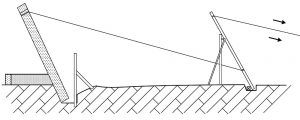 Figure 10. Suggested way to tip uprights to vertical.
Figure 10. Suggested way to tip uprights to vertical.
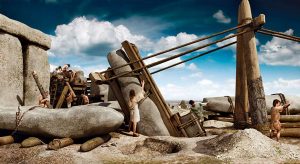 Figure 11. Artistic view of upright installation.
Figure 11. Artistic view of upright installation.
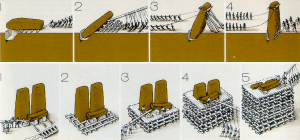 Figure 12. Suggested upright and lintel installation.
Figure 12. Suggested upright and lintel installation.
Figure 13. Suggested raising of uprights and lintels.
In considering these ideas, all of which look good at first glance, there are some things to keep in mind. Firstly the trilithons must be set up first. There would be no realistic way to get trilithons installed after the sarsen circle was completed. Figure 14 illustrates that point.
 Figure 14. Trilithon uprights must go up before sarsen circle.
Figure 14. Trilithon uprights must go up before sarsen circle.
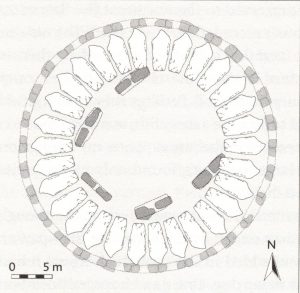 Figure 15. Shows difficulty in raising uprights from the inside of the circle.
Figure 15. Shows difficulty in raising uprights from the inside of the circle.
Secondly, if the uprights for the sarsen circle are to be pulled up into place it is difficult to see how there would be enough room due to the location of the existing trilithon stones and their lintels. What if the circle stone uprights are tipped into their holes from the outside? Instead of pulling them up, push them up. Figures 16 and 17 show how this was done for the monoliths at Easter Island in the 1950s.
Figure 16. Easter Island.
Instead of using rocks the workers at Stonehenge could have used wooden cribbing like shown in Figures 12 and 13. The key is that the uprights would be tipped by a series of prying and cribbing actions until it slipped into its hole to be positioned and tamped into place. After a period of settling the process of getting the proper upright height and the lintel prepped and lifted according to the processes shown in Figures 12 and 13 could be completed for each stone location.
God only knows exactly how and when Stonehenge was put together. But it is clear that it was done by a people with innate intelligence and skill. God created man in his image with intelligence enough that Adam was able to name all the animals. It is possible that ancient man had abilities that were lost due to the Flood and the dispersion at Babel and that have not yet been re-discovered.
J.D. Mitchell
References/Credits for this article:
- Cox, Gavin, Creation 42(2):36-38, April 2020, (Figures 9 &10 in this Part 2 article).
- English Heritage Guidebook-Stonehenge, English Heritage, London, 2013.
- English Heritage website, english-heritage.org.uk, accessed 10/28/23, (Figures 1, 2, 3, 4, 5, 11 in this Part 2 article).
- Heyerdahl, Thor, Aku-Aku, Rand McNally, 1958, (Figures 16 & 17 in this Part 2 article).
- Pitts, Mike, How to Build Stonehenge, Thames & Hudson, Ltd., 2023, (Figures 7, 8, 13, 14, 15 in this Part 2 article).
- pintarest.co.uk, accessed 10/28/23, (Figure 12 in this Part 2 article).
